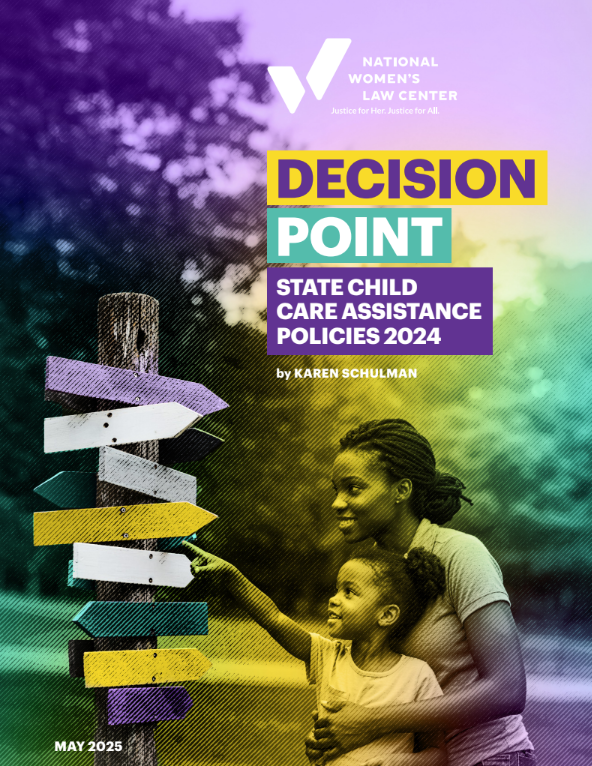Abortion rights, women of color, and LGBTQIA+ people are under attack. Pledge to join us in fighting for gender justice.

Child care is crucial for the well-being of parents, children, and our nation. It enables parents to work and support their families or obtain education or training to get a better, more stable job. It gives children a safe, nurturing environment to learn and develop skills they need to succeed in school and in life. By bolstering the current and future workforce, it serves as the backbone of our nation’s economy. Yet, the child care sector is fragile, and the expiration of temporary federal relief funding has exacerbated long-standing challenges.
Many families, particularly low-income families, struggle with the high price of child care. At the same time, child care workers—who are predominantly women and disproportionately women of color—are paid poverty-level wages, and Black and Latina child care workers often earn even less than their white peers. Increasing families’ access to affordable, stable, nurturing child care and improving child care teachers’ compensation requires expanded public investment in child care.
The Child Care and Development Block Grant (CCDBG), the major federal child care assistance program, provides some support for families needing child care and for child care programs and providers. However, due to inadequate funding, there are significant gaps in child care assistance policies, which are set by states within federal parameters. To assess the status of state child care assistance policies—where the gaps are, where progress is being made, and where further progress is needed—this report examines states’ policies in five key areas, including:
- Income eligibility limits to qualify for child care assistance;
- Waiting lists for child care assistance;
- Copayments required of parents receiving child care assistance;
- Payment rates for child care providers serving families receiving child care assistance; and
- Eligibility for child care assistance for parents searching for a job.
This analysis of child care assistance policies as of February 2024 shows a mixed picture, with some states making progress on their policies, others failing to move forward or taking steps backward, and most states continuing to have substantial shortfalls in their policies. States could have further erosion in their policies as they experience the full impact of the loss of temporary CCDBG supplemental funding, which expired in September 2024.
If substantial new federal funding is not provided for child care, states will continue to have restrictive income limits that keep low- and moderate-income families from qualifying for child care assistance, long waiting lists that prevent eligible families from receiving assistance, high copayments that place significant financial burdens on families receiving assistance, and inadequate payment rates that deprive child care programs of the resources needed to fairly compensate child care teachers and offer high-quality care.
